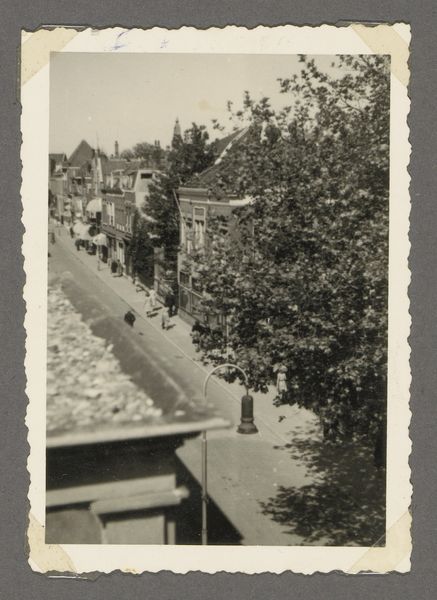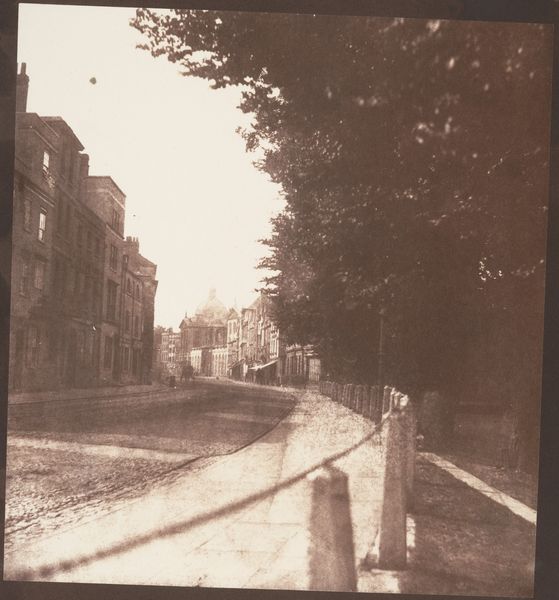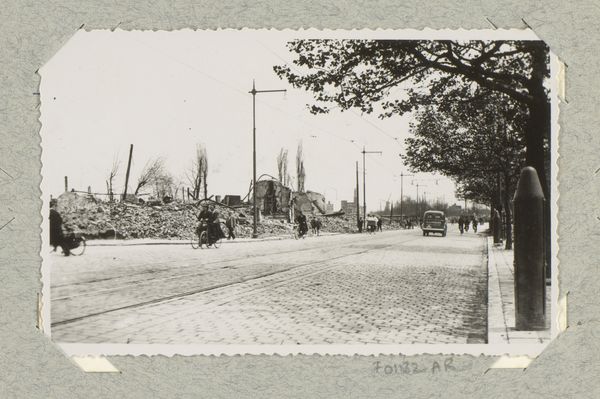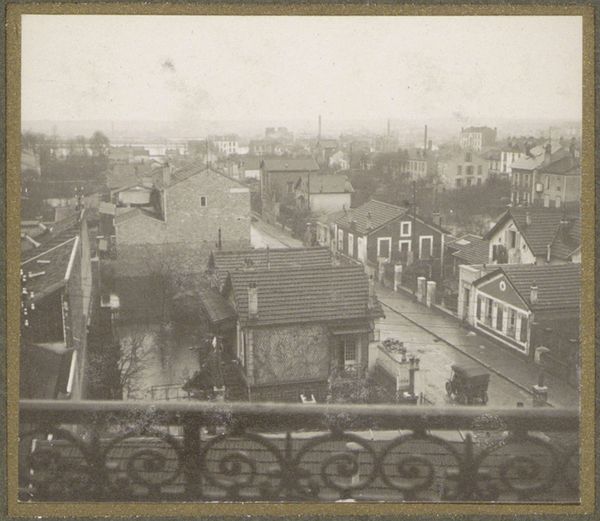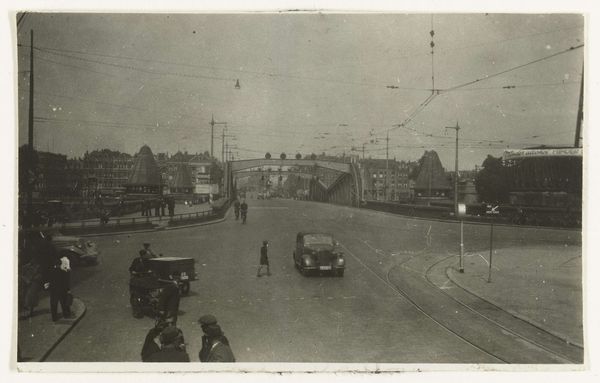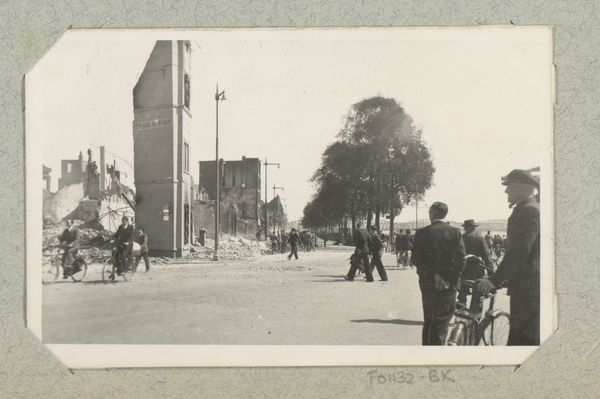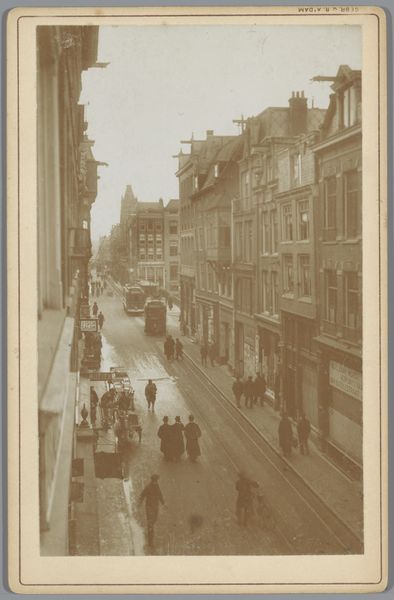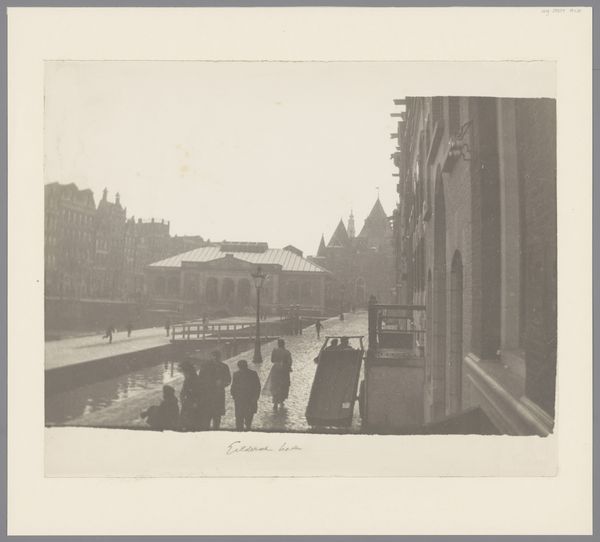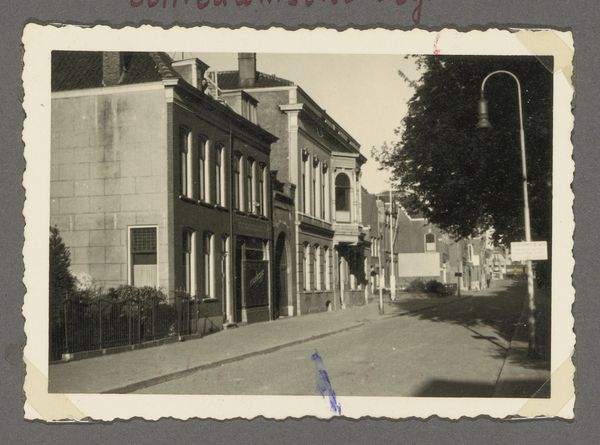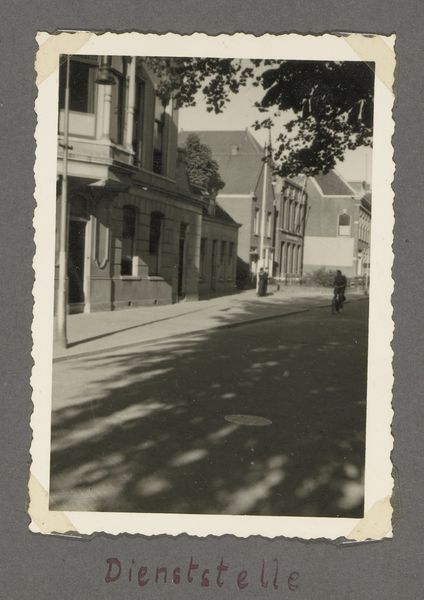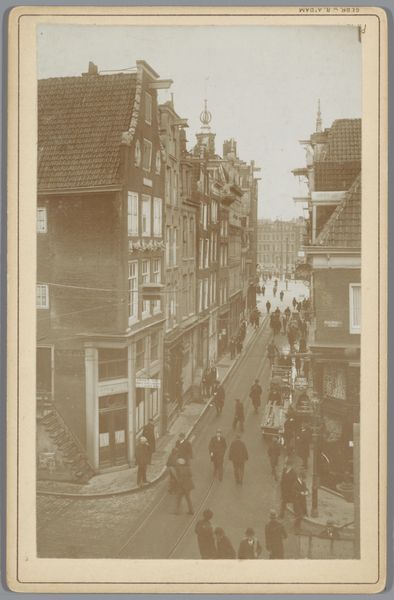
photography
#
landscape
#
photography
#
street
#
realism
Dimensions: height 87 mm, width 63 mm
Copyright: Rijks Museum: Open Domain
Editor: So this is "Schiedamseweg te Vlaardingen," a photograph taken sometime between 1941 and 1945. It's a rather muted image; the tones are gray. It's a street scene but the vantage point is interesting, almost voyeuristic. What catches your eye in this composition? Curator: Immediately, I observe the dynamic interplay of line and form. The receding perspective, anchored by the strong horizontal of the rooftops and the diagonal sweep of the street itself, create a compelling structure. Note the recurring vertical elements – lampposts, church spire, even the stark trees. How do these verticals modify your reading of the space? Editor: I see what you mean. They sort of break up the flatness and add a rhythm, but they're also kind of sparse. They emphasize the emptiness of the street. Curator: Precisely. The tonal range, primarily within shades of gray, serves to emphasize the underlying geometry. Consider the light – where does it fall, and how does it shape the forms and volumes we perceive? This formal restraint contributes to the overall mood, wouldn't you agree? Editor: Yes, definitely. The light almost feels… regulated, like it’s been carefully distributed. You know, looking at it like this, breaking it down to lines and forms, I hadn't fully appreciated how deliberately it's composed. Curator: It's in the photograph’s deliberate structural control where the work's artistic essence resides. This method eschews contextual elements to emphasize its structural integrity and aesthetic coherence. It reveals its essence, freed from external references. Editor: I've never thought of realism like this before. Thanks for expanding my understanding! Curator: Likewise. These visual investigations reaffirm the idea of intrinsic visual narratives and compositional design, challenging traditional modes of art appreciation.
Comments
No comments
Be the first to comment and join the conversation on the ultimate creative platform.
